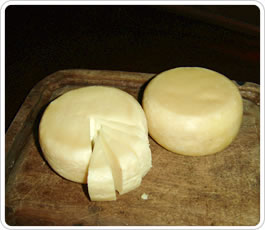Colony cheese
An overview of the cheese known as Colony cheese
Overview[edit | edit source]
Colony cheese is a type of cheese that originates from the Colony region in Country. It is known for its distinctive flavor and texture, which is achieved through a unique process of aging and fermentation. Colony cheese is typically made from cow's milk, although variations using goat's milk or sheep's milk can also be found.
History[edit | edit source]
The production of Colony cheese dates back several centuries, with its origins deeply rooted in the agricultural practices of the Colony region. The cheese was traditionally made by local farmers and has since become a staple in the region's cuisine. Over time, Colony cheese gained popularity beyond its place of origin, becoming a sought-after delicacy in various parts of the world.
Production Process[edit | edit source]
The production of Colony cheese involves several key steps:
- Milk Collection: Fresh milk is collected from local dairy farms. The quality of the milk is crucial to the final product.
- Curdling: The milk is heated and a natural rennet is added to curdle the milk, forming curds and whey.
- Molding: The curds are cut and placed into molds to shape the cheese.
- Aging: The cheese is aged in controlled environments for several months, allowing it to develop its characteristic flavor and texture.
Characteristics[edit | edit source]
Colony cheese is known for its semi-hard texture and a rich, nutty flavor. The aging process imparts a slightly tangy taste, with hints of earthiness. The cheese has a pale yellow color and a smooth, creamy consistency.
Culinary Uses[edit | edit source]
Colony cheese is versatile in culinary applications. It can be enjoyed on its own, paired with wine or fruit, or used as an ingredient in various dishes. It melts well, making it suitable for use in fondue, gratin, and cheese sauces.
Related pages[edit | edit source]
| Cheese | ||||||||||
|---|---|---|---|---|---|---|---|---|---|---|
|
Search WikiMD
Ad.Tired of being Overweight? Try W8MD's physician weight loss program.
Semaglutide (Ozempic / Wegovy and Tirzepatide (Mounjaro / Zepbound) available.
Advertise on WikiMD
|
WikiMD's Wellness Encyclopedia |
| Let Food Be Thy Medicine Medicine Thy Food - Hippocrates |
Translate this page: - East Asian
中文,
日本,
한국어,
South Asian
हिन्दी,
தமிழ்,
తెలుగు,
Urdu,
ಕನ್ನಡ,
Southeast Asian
Indonesian,
Vietnamese,
Thai,
မြန်မာဘာသာ,
বাংলা
European
español,
Deutsch,
français,
Greek,
português do Brasil,
polski,
română,
русский,
Nederlands,
norsk,
svenska,
suomi,
Italian
Middle Eastern & African
عربى,
Turkish,
Persian,
Hebrew,
Afrikaans,
isiZulu,
Kiswahili,
Other
Bulgarian,
Hungarian,
Czech,
Swedish,
മലയാളം,
मराठी,
ਪੰਜਾਬੀ,
ગુજરાતી,
Portuguese,
Ukrainian
Medical Disclaimer: WikiMD is not a substitute for professional medical advice. The information on WikiMD is provided as an information resource only, may be incorrect, outdated or misleading, and is not to be used or relied on for any diagnostic or treatment purposes. Please consult your health care provider before making any healthcare decisions or for guidance about a specific medical condition. WikiMD expressly disclaims responsibility, and shall have no liability, for any damages, loss, injury, or liability whatsoever suffered as a result of your reliance on the information contained in this site. By visiting this site you agree to the foregoing terms and conditions, which may from time to time be changed or supplemented by WikiMD. If you do not agree to the foregoing terms and conditions, you should not enter or use this site. See full disclaimer.
Credits:Most images are courtesy of Wikimedia commons, and templates, categories Wikipedia, licensed under CC BY SA or similar.
Contributors: Prab R. Tumpati, MD

